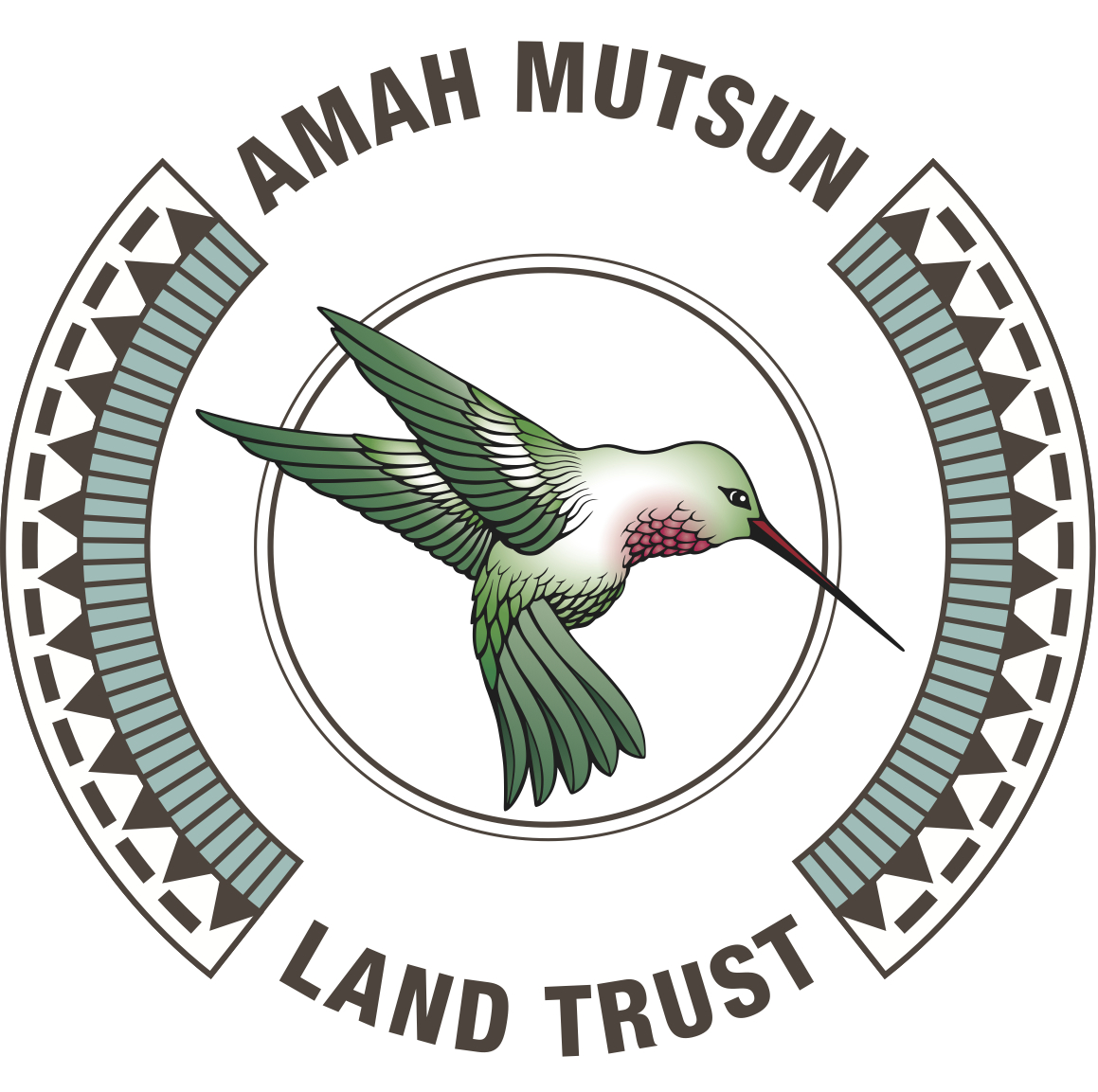Winter 2020 Newsletter
From the Desk of the Interim Executive Director
By Sara French, Interim Executive Director
As this year comes to a close, I’d like to express sincere gratitude to all of our AMLT staff and supporters. With your help, we experienced a great deal of success this year, even as we faced one unprecedented challenge after another. I’d like to share some of our accomplishments in 2020 so we can celebrate what is possible when we work together to care for Mother Earth, and each other.
Our AMLT Native Stewardship Corps started the year strong, with 36 weeks of funded work lined up on the calendar, only to have the program come to a screeching halt in March when shelter-in-place orders changed life as we know it. Over a period of three months, the Native Stewards were furloughed while administrative staff worked to develop COVID-19 protocols that would allow us to continue to work together. Thankfully, we received a PPP loan during this time, plus were able to bring on two new full-time staff members to support our programs.
Native Steward Marcela Luna and interns near Cotoni Coast Dairies for archeological surveying
In July we not only welcomed the Native Stewards back to the field, but we also held our Native Stewardship Corps summer internship program, creating summer work for 8 Amah Mutsun youth members between the ages of 16 - 20. The intern program gave participants the chance to experience life as a Native Steward while they worked alongside their family members to relearn and implement the practices of their ancestors. You can read about the interns’ experiences in their own words here.
Camp box for Virtual Youth Summer Camp
Later in the summer, AMLT kicked off its first Virtual Youth Stewardship Camp. What has over the past three years been a two week overnight camp based in Awaswas coastal territory for typically 40 youth (ages 5-18), this year transitioned to become five online weekly Zoom sessions for over 60 Amah Mutsun youth. Youth living anywhere from Sacramento, to Los Angeles, to Las Vegas, joined our virtual online events to learn about Amah Mutsun culture and environmental stewardship. A camp box was delivered to them containing materials aimed at connecting them to their culture and ancestral landscapes. Led by Tribal Elders, Native Stewardship Corps members, and AMLT staff, youth engaged in activities ranging from necklace making, language lessons, and planting seeds of traditional foods. Transforming our coastal stewardship summer camp into a virtual program was challenging, but we were pleased to provide programming for our largest number of participants to date, some of whom would not have been able to join in person. You can read more about the details of the youth summer camp from our Summer Newsletter here.
Another ongoing project that has continued through this turbulent year has been the steady work at Quiroste Valley Cultural Preserve. Quiroste Valley Cultural Preserve is a 225-acre portion of Año Nuevo State Park where the California Department of Parks and Recreation is working collaboratively with AMLT to protect and steward cultural and natural resources. The preserve was created in 2008 due to the presence of significant ecological and cultural resources in the valley. AMLT has engaged with a multidisciplinary team of scientists to complete research which suggests that Native people maintained open coastal prairies in this area through frequent landscape burning over thousands of years. Today, most of the landscape has transitioned to shrublands and conifer forest due to lack of active management. Beginning in 2015, AMLT has been working to preserve and expand coastal prairies, as well as to remove selected invasive exotic plants like poison hemlock. For more details about our past work at Quiroste you can read our article here.
Currently, the work in Quiroste Valley is progressing from invasive species removal and pile burning into an exciting new territory of revegetation and plans for broadcast burning. The CZU complex fires that tore through the Santa Cruz Mountains devastated many communities and homes - including the spike camp headquarters for the Native Stewardship Corps - but the fires stopped short of Quiroste Valley. With the surrounding area depleted of high density fuels, and the growing understanding that Indigenous land management practices of frequent, low intensity, cultural burns protect communities and the environment from catastrophic fires, reintroducing cultural burning to Quiroste Valley Cultural Preserve is more of a possibility now than it has ever been. AMLT staff are working alongside partners at State Parks and San Mateo County RCD to explore how cultural burning may be reintroduced to heal and restore this significant site.
NSC member Natalie Pineida in Quiroste Valley
Also at Quiroste Valley, work to propagate native plants is underway with funding from the California Natural Resources Agency Cultural, Community and Natural Resources grant program. The Native Stewardship Corp is in the process of reseeding native coastal prairie species at Quiroste, while working with Pie Ranch to build a greenhouse adjacent to Cascade Ranch where AMLT will propagate coastal prairie plants for further restoration at Quiroste Valley.
Lastly, for an update on our Native Stewardship Corps we have put together a brief slideshow to highlight some of the work from this year. You can view the slideshow here.
Thank you again for all that you do to contribute to our vision, and please know that Amah Mutsun Land Trust wishes you all the best in the new year.



